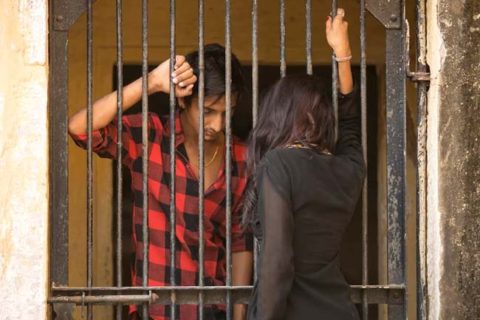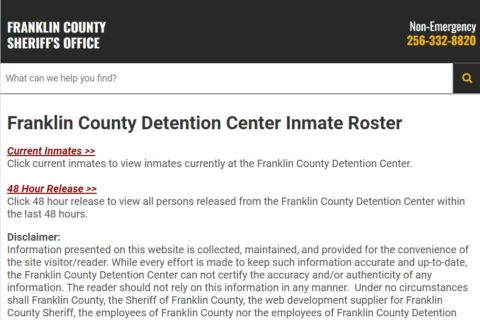Recently, Solitary Confinement is a controversial form of punishment that has long-lasting detrimental effects on an inmate’s psychological health, according to some studies. Basically, solitary confinement is a necessary method of separating violent prisoners from the general population, punishing offenders who try to cause riots or try to escape.
However, President Barack Obama announced a ban on solitary confinement on January 26, 2016 for juvenile offenders in the federal prison system. Then, you may wonder whether all states legalize Solitary Confinement for prisoners. If you want to know the information about it, you can dive into our post below.

Is Solitary Confinement Legal in All States?
According to some sources, there are at least 38 states that hold prisoners in solitary confinement for a variety of reasons such as posing a security risk, breaking rules or being a gang member. That said, death-row inmates are also segregated in single cells.
Reportedly, California inmates are held in single cells indefinitely. There are about 89 inmates in Pelican Bay State prison held in solitary for 20 years or more. In at least 19 other states, the inmates may be kept in solitary without definite release dates.
In the United States penal system, more than 20% of state and federal prison inmates and 18% of local jail inmates are held in solitary confinement or another form of restrictive housing at some point during their imprisonment. It is known that some state prison departments give information on inmate’s average length of stay in solitary.
Beginning August 1, 2020, New Jersey will limit solitary confinement to 20 consecutive days and a total of 30 days during a 60-day period. On July 11, 2019, the governor Phil Murphy signed the Isolated Confinement Restriction Act.
How Is the Legality of Solitary Confinement?
State legislatures and courts across the country are re-examining the practice of placing juveniles in solitary confinement and handcuffing juveniles during court appearances without first accessing the individual behaviour of each teen.
Many parties appraised that solitary confinement or seclusion is the most extreme form of isolation in a detention setting that can include physical and social isolation in a cell for 22 to 24 hours per day.
The American Academy of Child & Adolescent Psychiatry reveals that solitary confinement of juveniles may lead to depression, psychosis and anxiety. In recent years, seven states have passed laws that limit or prohibit the use of solitary confinement for young men in correctional facilities.
We take an example, Connecticut law states that no child at any time should be held in solitary confinement. However, seclusion is used periodically if authorized and the youth is checked every thirty minutes.
About 23 states and the District of Columbia have implemented statutes which limit or prohibit solitary confinement, while other states have limited its use through administrative policy, code or court rules.
The solitary confinement opponents have judged with varying success that the practice violates prisoners’ constitutional rights. Regardless of the long history of litigation over the practice, the US Supreme Court has yet to state definitively whether solitary is constitutional or not. In Wilkinson v. Austin, the Supreme Court considered the constitutionality of long-term solitary confinement only once.
In contrast to the Supreme Court’s inaction, lower courts have implemented constitutional restrictions on the use of solitary confinement. Regarding those limitations, federal courts have rejected finding solitary confinement per se unconstitutional.
In fact, the U.S. has also insulated itself from any official sanction for international violations by not submitting to the jurisdiction of committees which enforce the International Convenant on Civil and Political Rights (ICCPR) or of the Committee Against Torture (CAT).
What Are the Forms of Solitary Confinement?
Basically, solitary confinement comes in one of two forms:
-
- Disciplinary Segregation: It applies where inmates are placed in solitary confinement temporarily as punishment for rule breaking.
- Administrative Segregation: It applies where inmates deemed to be a risk to the safety of other inmates, prison staff or to themselves are put in solitary confinement for extended periods of time that goes commonly months for years.
History of Solitary Confinement
Solitary Confinement first arose in the 1700s in the United States among religious groups like the Quakers who extremely thought isolation with a Bible would lead to repentance and rehabilitation.
The practice significantly expanded in the nineteenth century, as it was viewed as a humane alternative for methods of punishment like public floggings. By the early 1900s, however, it had largely passed into disuse because of its high cost and the view that it was unethical. Well, it would return as a common form of incarceration during the tough on crime political period in the 1980s and 1990s.
Controversy of Solitary Confinement
According to prison officials, solitary confinement is a necessary method to separate violent inmates from the general population, to separate vulnerable inmates from other inmates and to punish inmates who try to escape or cause riots.
However, the critics argue that it is such a cruel form of punishment that has been demonstrated to have long-lasting negative psychological effects on prisoners. Some critics also revealed that long-term solitary confinement is a form of torture that is an unnecessary method of sequestering violent or vulnerable inmates who can be separated through more humane means safely.
The case of courts revealing that solitary confinement violates the Eighth Amendment to the United States Constitution’s ban on cruel and unusual punishment have had mixed success. After solitary confinement is found, however, it has been a cruel and unusual punishment when applied to mentally ill inmates, but it is deemed permissible for sane adults.
Shane Bauer in his investigation of solitary confinement in California prisons, explains a system where inmates are held in near-total isolation for years, frequently because of their alleged status as members or affiliates of prison gangs.
It is not surprising, the prisons guard facts about their inner workings almost as intensely as they guard their inmates. If you want to get a more complete fact, you can contact every state prison department in the country and ask about their gang and solitary confinement policies.

A bookworm and researcher especially related to law and citizenship education. I spend time every day in front of the internet and the campus library.




